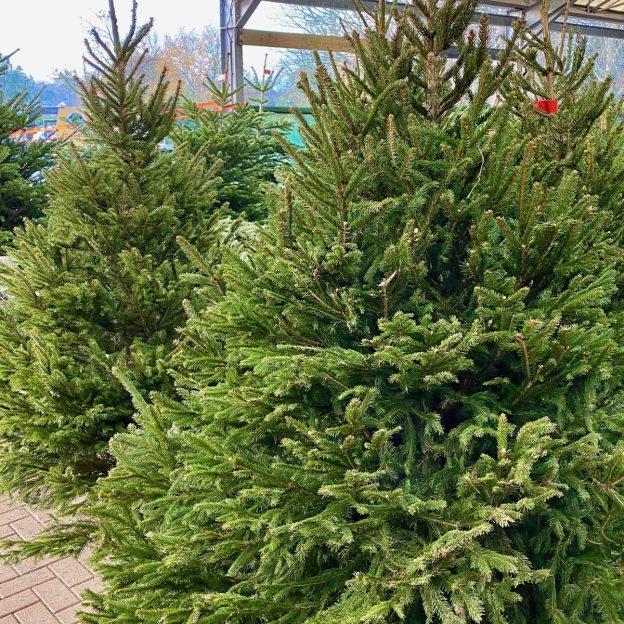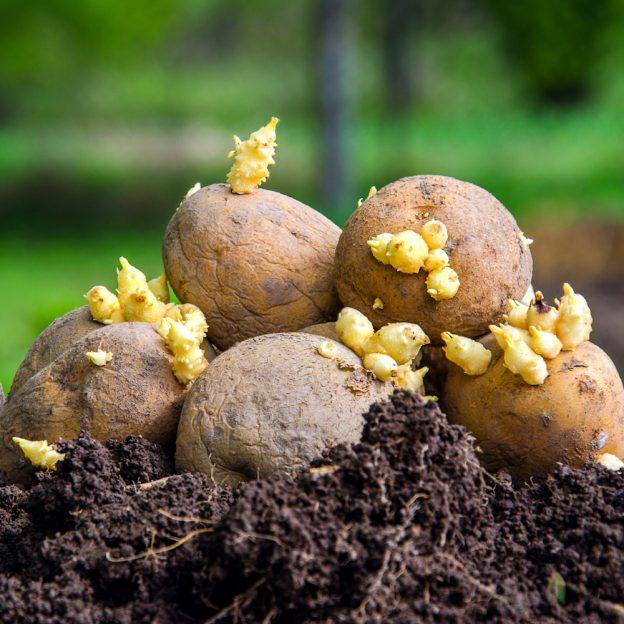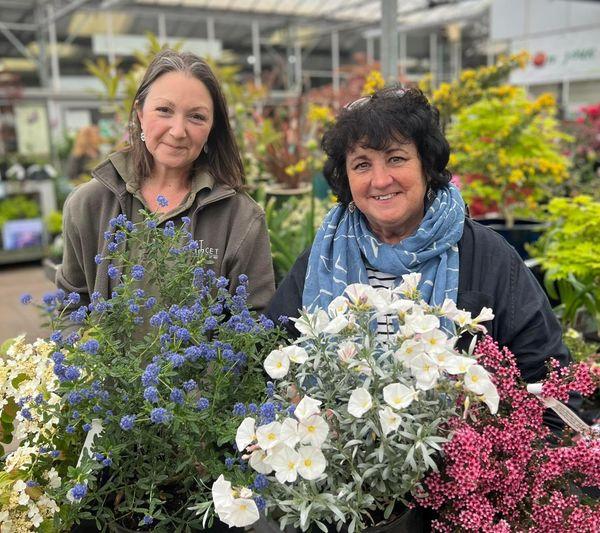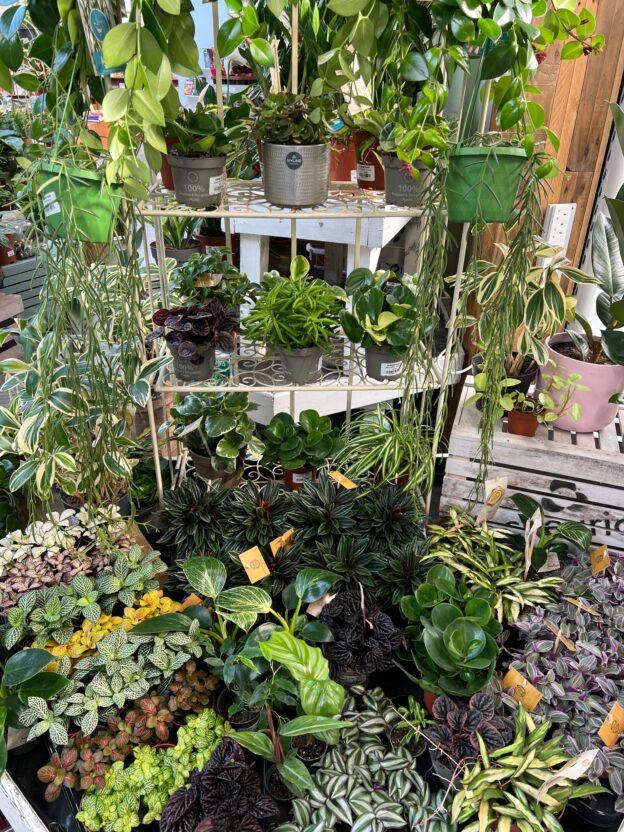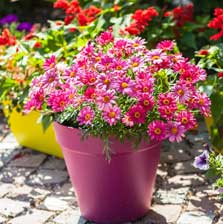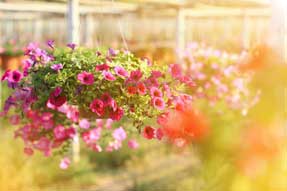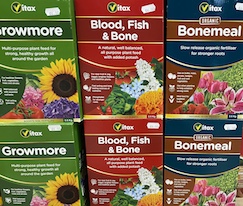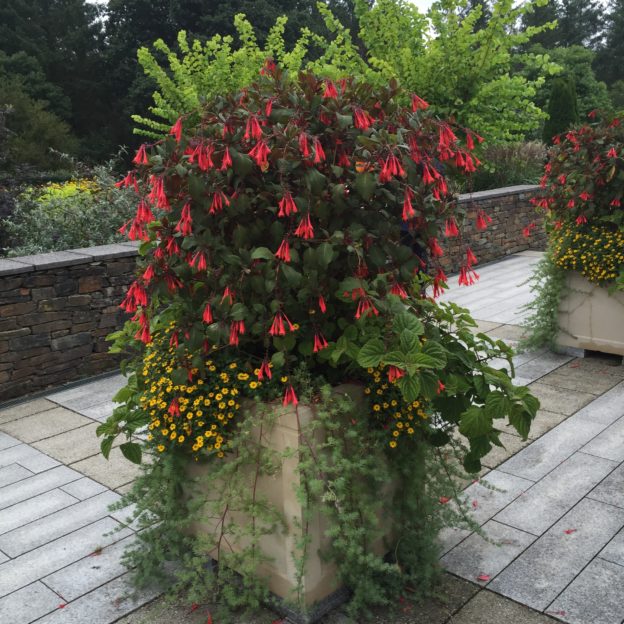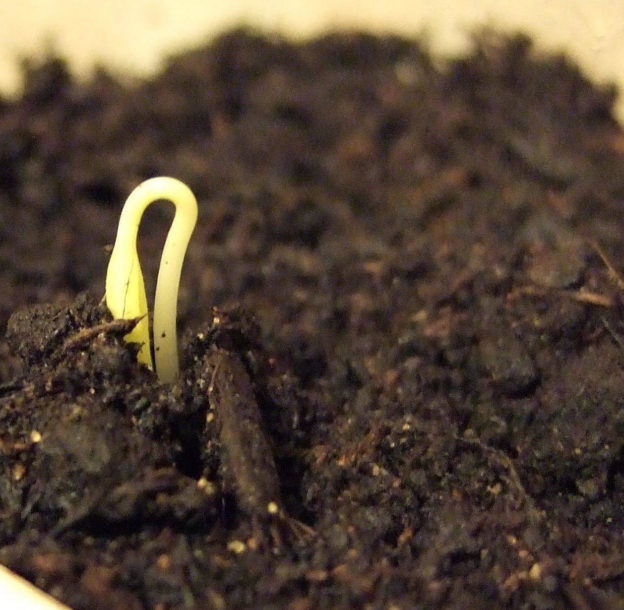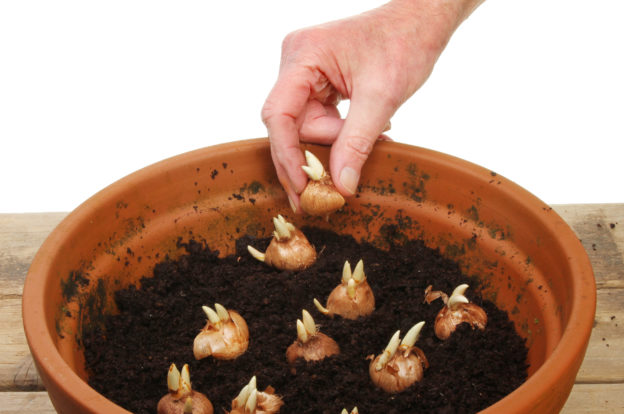Learn how to choose the perfect Christmas tree for your home with our helpful tips. We offer various trees for different budgets, including real cut, pot-grown, or artificial options. Starting from the 25th of November, our freshly cut Christmas trees will be available for purchase.
Don’t forget to use your coupon to enjoy £5 off any tree, real or artificial, that you purchase from us!
Preparation – measure up
Before leaving home to get your Christmas tree, measure your space and check your tree stand. Everyone gets tempted by a big tree only to get home and find it can’t fit through the door or stand up straight! It is also important to measure the width/diameter of your space.
Once you know what size you need, the next step is deciding what look or feel you want by understanding the different varieties available. Here is a list of the varieties we will be selling this Christmas.
We will have four types to choose from:
Nordmann Fir
This is the nation’s favourite Christmas Tree because of their excellent needle holding properties. They have deep green, soft needles and are very bushy. We only stock premium deluxe grade trees which means that the stem is straight and located in the very centre of the tree. Their width will be less than the tree’s height yet wider than its halfway point and the branches will be spread evenly in near-perfect symmetry!
Our Nordmann Firs are available from 4ft to 9ft tall.
The Fraser Fir
The Fraser Fir is a brilliant alternative to the Nordmann and it is particularly attractive thanks to its unrivalled needle retention. Slimmer and more conical in shape than the Nordmann, the Fraser has thick and compact branches and sometimes a less straight, marginally twisted leader (top branch). The smaller softer needles give off a citrus scent. This is the perfect choice for smaller spaces.
We will have cut Fraser Firs in 4ft and 6ft heights.
The Norway Spruce
This is the traditional Christmas Tree with a festive pine scent, and it is perfect for outdoor displays. The Norway Spruce is the cheapest tree to buy but we do advise leaving it stood outside for as long as possible as it is the worst for needle retention when placed indoors. Definitely keep it away from any heat source and keep the water reservoir in your container topped up daily. The needles can be quite sharp so it’s not a great choice if you have young children.
Our Norway Spruce trees are again Premium grade, so they have been pruned or sheared to give the picture-perfect Christmas tree shape.
We will have cut Norway Spruce trees from 5ft to 8ft heights.
The Blue Spruce
New to us this year as a cut tree is the Blue Spruce. It shines silvery blue to fresh green and whilst it has shaper needles than the Norway Spruce, this variety boasts better needle retention. With a delectable scent, this is a stunning alternative if you are looking for something different this year.
We will have 5ft tall cut Blue Spruce available.
Getting your tree home
Now you know what size and what type of tree you want, visit us to choose your tree. We drill a small hole in the middle of all our 4-6ft tall trees so that we can display them on pins. This means that it is like walking through a forest and you get to see the tree as it would be in your home (standing up). Our staff are on hand to help lift the trees off their perches and spin them around for you.
Once you are happy you have chosen the perfect tree we can then net the tree for you if you prefer. Netting is useful to make the tree narrower for getting home, the tree slides through the netting machine from the base so the branches are gently pushed upwards. We find it is easier to get your tree in its stand whilst it is still netted as that way you can get it straight without poking your eye on the branches! Once in position, fill the water reservoir on your container and then cut the netting off by cutting straight from the base to the top of your tree.
If you are not going to decorate your tree immediately, the cut the netting off and keep the tree stood up in a bucket outside. The longer you keep your tree outside the better as it will keep your tree fresher.
All you have to do now is decorate and we’ve got a lovely selection of lights and decorations awaiting your visit.

